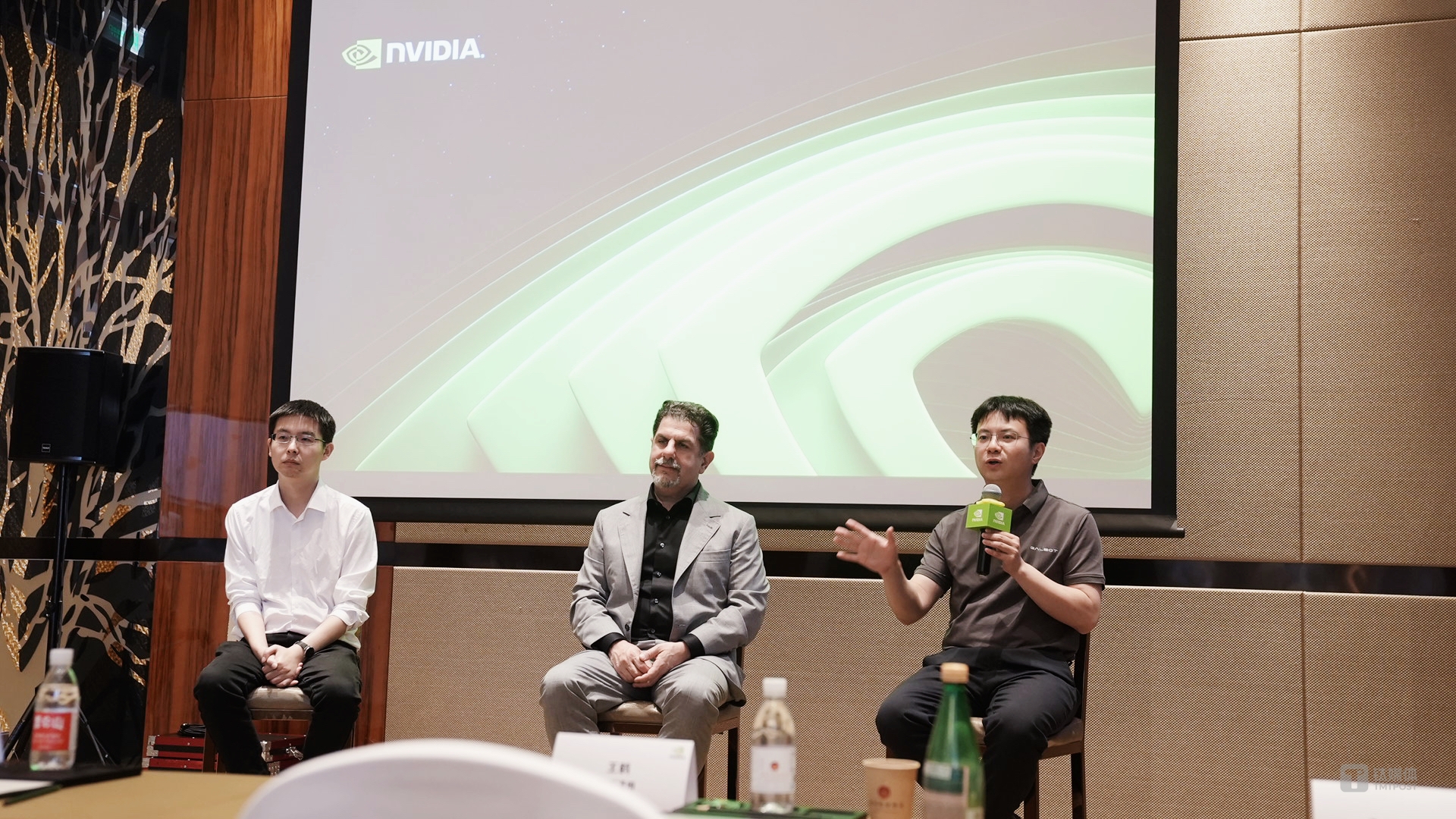
From left to right: Wang Xingxing, Founder, CEO, and CTO of Unitree Robotics; Rev Lebaredian, Vice President of Nvidia Omniverse and Simulation Technology; Wang He, Assistant Professor at Peking University and Founder & CTO of Galbot.
AsianFin — The next wave of artificial intelligence is physical, and Nvidia CEO Jensen Huang is making a clear bet on its future. The recent launch of the Nvidia Jetson AGX Thor developer kit, a specialized chip for humanoid robots, signals a new phase in the race for embodied intelligence.
Priced at $3,499, the Jetson Thor offers a massive leap in performance, boasting 7.5x the AI computing power and 3.5x the energy efficiency of its predecessor.
In a move reminiscent of Nvidia's early support for OpenAI, the first batch of these powerful chips has been delivered to China’s Galbot. The company’s robot, also named Galbot, has become the world's first to internally deploy the Thor chip, showcasing its advanced capabilities at the 2025 World Robot Conference (WRC). During a live industrial demonstration, the robot’s vision-guided handling and advanced planning drew a crowd, a powerful testament to the potential of this new hardware.
This collaboration highlights a broader trend: China is becoming a hotbed for embodied intelligence innovation. The country is home to a rapidly growing number of robotics companies, a large pool of top-tier AI talent, and a robust manufacturing ecosystem. These factors, combined with significant investment, are positioning China to be a global leader in the field.
A Vision of General-Purpose Robots and Trillion-Dollar Markets
At the WRC, a panel discussion featuring Nvidia's Rev Lebaredian and Chinese robotics leaders Wang Xingxing of Unitree Robotics and Wang He of Galbot offered a glimpse into a future shaped by general-purpose robots.
"All robotics companies present today... share the common goal of building general-purpose robots," said Wang He, who also serves as an assistant professor at Peking University. He believes these robots will be the next revolutionary product, unlocking a market worth trillions of dollars.
Wang He boldly predicted that the output value of humanoid robots will increase tenfold every three years. "Right now, the leading companies are selling 1,000 units; in three years, it will be 10,000 units; and in another three years, 100,000 units," he stated. If realized, this would lead to a market valued at hundreds of billions of RMB within six years, surpassing the entire industrial robotic arm market. Looking further ahead, he envisions a trillion-dollar market within a decade, potentially rivaling the automotive and smartphone industries.
Galbot's approach to this future is a departure from a purely humanoid form. Its G1 robot features a wheeled chassis with dual arms, designed for industrial-grade safety, long battery life, and reliable at-scale deployment. The company's focus on practical, commercial applications is evident in its launch of the world's first fully autonomous robot pop-up store, the "Galaxy Capsule," which is now operational in Beijing. This push toward commercialization is driven by a series of foundational large models, including TrackVLA for autonomous navigation and GraspVLA for zero-shot object grasping. The company credits Nvidia's comprehensive simulation engine for its ability to train these models using 99% synthetic data, a key factor in accelerating its development.
Wang Xingxing, founder of Unitree Robotics, shares the vision of general-purpose robots, viewing humanoid robots as the "most ideal form" for achieving Artificial General Intelligence (AGI). He believes that as AI models become more powerful, the hardware will become less of a limiting factor, envisioning a future where assembling a humanoid robot is as straightforward as building a PC today.
Unitree has made a name for itself with highly competitive and affordable humanoid robots. The company recently released a new model priced at around 39,000 RMB ($5,400), which Wang Xingxing says offers excellent performance at a globally competitive price.
While the hardware is "good enough," Wang Xingxing believes the biggest bottleneck remains the lack of generalizability in embodied intelligence models. He notes that the industry lacks a unified architecture, which is slowing progress. He sees a potential breakthrough in world models—like the one recently demonstrated by Google DeepMind—which could allow robots to "imagine" and predict outcomes before acting.
Wang Xingxing predicts that the "ChatGPT moment" for humanoid robots could arrive within 1-3 years, with widespread implementation in the next 3-5 years. He emphasizes a strategy of bold experimentation and continuous model development, with the ultimate goal of achieving "real-time generation of any arbitrary action."
Nvidia's Three-Pronged Strategy for Robotics
Nvidia's Rev Lebaredian outlined the company’s three-part strategy to support the robotics revolution. Nvidia is building three types of computers: the robot’s onboard computer, the AI factory computer, and the simulation computer. The onboard computer, such as the Jetson Thor chip, refers to the computing power embedded within the robot itself.
The AI factory computer, like the DGX and HGX systems, is where the robot's "brain" is developed by processing massive datasets. Finally, the simulation computer, which runs the Omniverseplatform, allows for the creation of synthetic data and the safe, rapid testing of robots in a virtual environment.
Lebaredian underscored the urgent need for this technology, arguing that a declining global population will lead to stagnant economies unless an "artificial population" of robots can boost productivity. He praised China's unique advantage, noting its massive scale, deep expertise in manufacturing, and large pool of talented AI researchers and developers, all of which create an unparalleled ecosystem for the rapid development and mass production of physical AI.

The convergence of cutting-edge hardware from Nvidia and the ambitious innovation of Chinese companies like Galbot and Unitree Robotics signals that the era of embodied intelligence is not just a distant dream, but a tangible reality in the making.
更多精彩内容,关注钛媒体微信号(ID:taimeiti),或者下载钛媒体App

